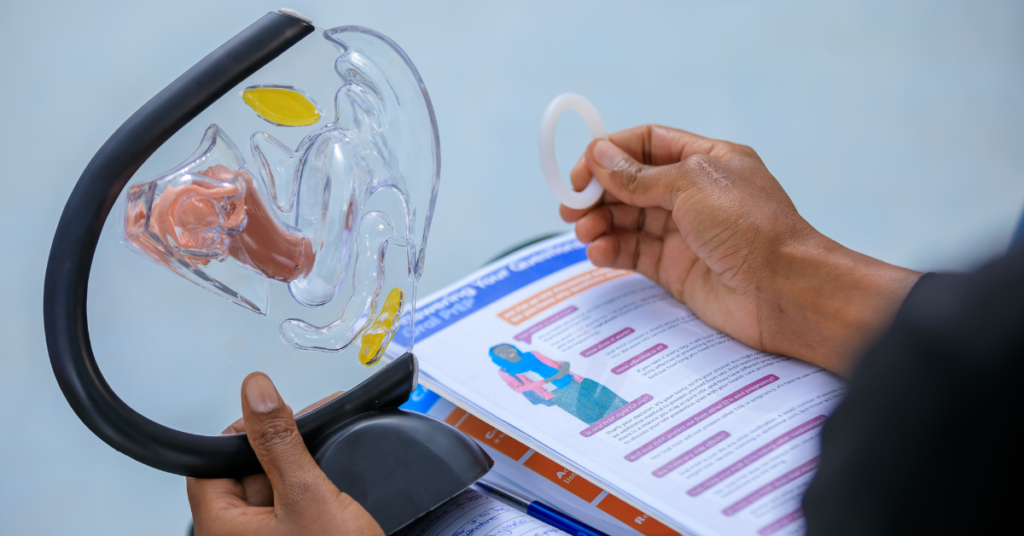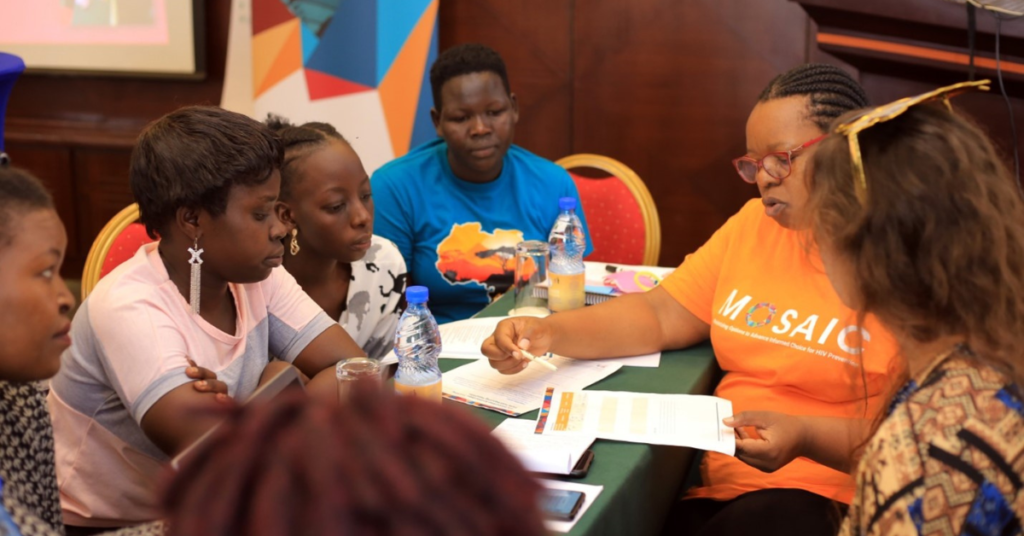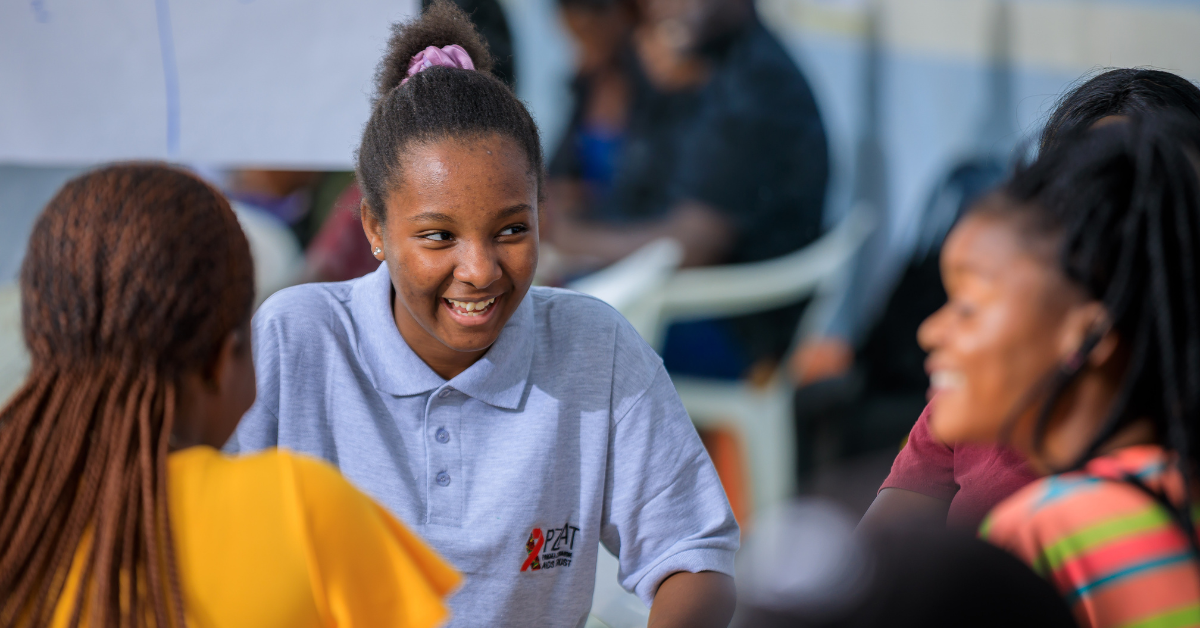Shyla Napier, FHI 360
Havana Mtetwa, Pangaea Zimbabwe AIDS Trust
Shawn Terera, Pangaea Zimbabwe AIDS Trust
Lindiwe Machekabuwe, HIV Prevention Ambassador
Nicole Macagna, FHI 360
The HIV Prevention Ambassador Training Package is designed to support the meaningful engagement of youth “Ambassadors” in helping adolescent girls and young women (AGYW) remain free from HIV. Recognizing young people as full partners in HIV prevention is a key step toward equalizing the response to the epidemic — today’s World AIDS Day theme and call to action.
In this blog post, three youth champions from Zimbabwe discuss their experiences serving as youth HIV prevention advocates and Ambassadors, their impressions of the training package, and their outlook on young people’s involvement in HIV prevention.
What is the HIV Prevention Ambassador Training Package?
The HIV Prevention Ambassador Training Package and Toolkit for AGYW were first published in 2019 by the OPTIONS Consortium with the aim of developing the capacity of Ambassadors — typically young adults ages 16 to 24 — to support the use of pre-exposure prophylaxis (PrEP) among peers in their communities. The package contains interactive, youth-friendly educational modules on sexual and reproductive health, human rights, gender, violence, and HIV transmission and prevention. The accompanying toolkit gives Ambassadors hands-on resources to help them support their peers and implement PrEP activities. Since its publication, the original training package has been downloaded over 800 times in at least 36 different countries — including in Africa, the Caribbean, Central Asia, East Asia, Europe, and the Pacific. Those interested in becoming Ambassadors train with local community-based organizations or other Ambassadors, using the package and toolkit.

Ambassador Voices
Lindiwe, 24, Ambassador, Chitungwiza
What has your experience as an Ambassador been like?
The Ambassador experience is something that has helped me develop and become better in my life as a young adult. I have learned to be a good communicator as well as to be in tune with what’s happening to young women in my community. Our day-to-day lives and problems tend to detach us from the problems happening in our communities, such as gender-based violence. Now, with my role as an Ambassador, I have become more aware of the problems that young people face in our community. This experience has really opened my eyes to the problems facing young women like me.
What does it mean to be an Ambassador?
Being an Ambassador means being a support mechanism for those who don’t know what support they need, whether it be information-based or being a listening ear. I think that’s an amazing thing. We need to be more in tune with the individual and not simply ignore uncomfortable experiences because they don’t directly affect us.
Havana, 19, youth advocate and MOSAIC NextGen Squad member, Harare
How was your experience learning about the HIV Prevention Ambassador training (HPAT)?
The process of coming up with material to add to the HPAT manual for the healthy relationship segment was so refreshing. Particularly the Healthy Relationships and Supportive Partners segment. This has proved to be a useful addition, as it explores the importance of a healthy relationship for HIV prevention purposes. For example, it is more likely for an adolescent girl or a young woman to continue using her chosen method of PrEP when they have the support of a partner. This support is mostly seen in healthy relationships.
It is also important for one to ask important questions. For example, most people assume that they know what a healthy relationship is. But once you start asking questions like, “What is a healthy relationship?” and “What does it look like?” and making the connection between relationship dynamics and HIV prevention, the more you develop a deeper understanding and appreciation for the HPAT.
Do you foresee the HPAT making an impact in your community?
The HPAT has such a bright future for challenging social norms in the community. While I respect and appreciate these social norms, I find it interesting how they may negatively affect the girl child —especially in the name of creating and maintaining social order. The way I foresee it, this could be an amazing opportunity to see a shift in the generation for a more open-minded way of thinking about PrEP, gender, and even something like education of adolescent girls and young women.
Shawn, 42, former DREAMS PrEP Champion and current Pangaea Zimbabwe AIDS Trust District Strategic Information Officer, Mazowe
What is your outlook on your experience being a male Ambassador?
My past experience as a male HIV prevention Ambassador was of creating demand for PrEP in my community and raising awareness about the availability of PrEP services at our local clinic and in the Mazowe District at large. I served as a link between the facility and the community, reaching out to clients through community gatherings with the support of community gatekeepers. I was active in correcting myths and misconceptions the community had about HIV and PrEP in general. I was teaching the community on the advantages of taking and adhering to oral PrEP and the disadvantages of not using such an effective HIV prevention method.
Have you made an impact using the HPAT with your peers (male/female) or people in the community in any way? If so, how?
I believe I’ve made an impact using the HPAT within my community by engaging in interactive discussions, through literacy sessions, and in sharing information about PrEP as an HIV prevention method with young women, my fellow male peers — adolescent boys and young men — and the community at large. A lot of young people in my community see me as a pillar of support when it comes to their sexual and reproductive health needs. They trust the information I give them, and they are always free to reach out to me when they need support, despite me being an older male.

What’s next for the HPAT?
Originally developed to support oral PrEP use among AGYW, the HIV Prevention Ambassador Training Package has since been adapted for use by other populations, including pregnant and breastfeeding individuals, men who have sex with men, sex workers, and transgender people. By the end of 2022, a new version of the training package for AGYW, including information and tools related to the PrEP ring and cabotegravir as PrEP (CAB PrEP), will be published. In 2023, the MOSAIC team will update the HIV Prevention Ambassador Training for Priority Populations to reflect the latest science and expand the training to include the ring and CAB PrEP.
Early field test results show that the training was well received by Ambassadors and correlated with increased PrEP uptake by AGYW. We are also planning a formal evaluation of the training to understand whether it truly can instigate a shift toward more open-minded ways of thinking that support sexual health and PrEP access for all who need it.
Featured Image: Havana Mtetwa shares information about PrEP method use during a recent HPAT in Harare, Zimbabwe (iTAP Media for MOSAIC).


